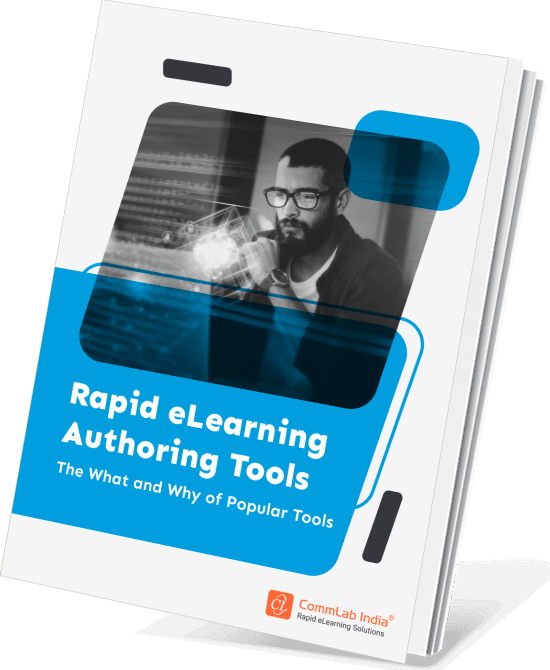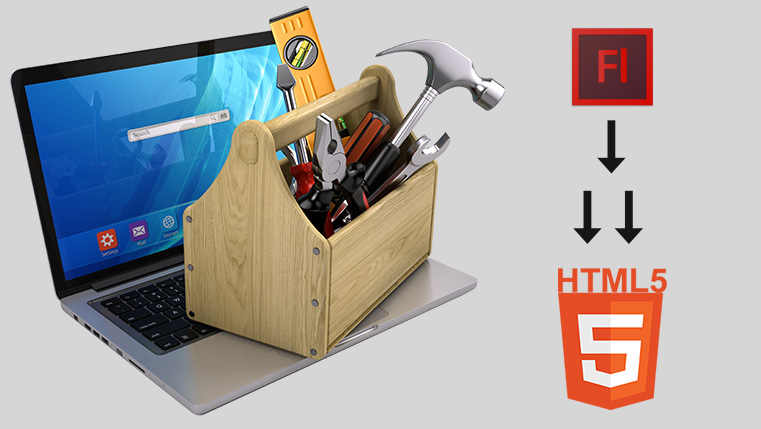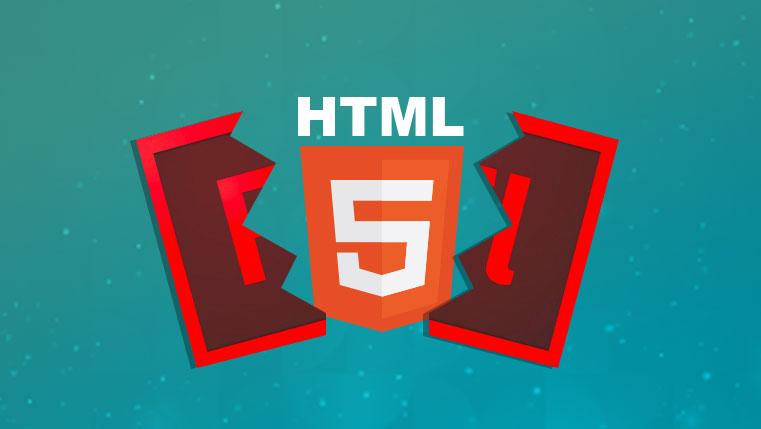10 Widely Used Authoring Tools that Support HTML5 and Empower E-learning

As technology evolves the workforce seeks more interactivity and access to learning programs on multiple devices. E-learning industry experts are introducing new concepts to engage learners and reduce their cognitive load. At the same time, e-learning developers want to minimize risks, efforts, and costs. In this scenario, is there a way to meet both needs simultaneously?
→ Download eBook Now: Rapid eLearning Authoring Tools
Of course, Yes! The adaptability and flexibility of HTML5 can address learner requirements and industry experts’ needs at the same time.
Flash is Fading Away
Two decades ago, e-learning developers used to develop courseware on the primary code base of JavaScript and action script in Adobe Flash. This helped develop interactive features and animations in e-learning modules. Flash was also supported by the Sharable Content Object Reference Model (SCORM) standards. Flash files (.swf) worked well on desktops and laptops and for many years, Flash ruled the e-learning world. The exponential growth of the Web and the digital revolution has brought tremendous changes in the e-learning industry. Smartphones, iPads, and tablets have opened new avenues for learning. But Flash is not compatible with mobile devices and latest browsers. Technology and e-learning experts consider Flash outdated. Though Flash can create rich visual interactivities, it is not enough for the changing times. Flash fails in flexibility.
Prominence of HTML5
So, most organizations are opting for HTML5.. HTML5 meets the expectations of learners who access online course content from mobile devices and multiple browsers. The Bring Your Own Device (BYOD) approach also boosted the use of HTML5 in corporate training.
Cisco’s BYOD Insights report revealed that 9 in 10 Americans use their Smartphones for work purposes. This gives learners the flexibility and avoids the obligation of sitting in front of a system to learn. Moreover, HTML5 provides offline access option to learners. Offline data management helps learners access the course content anywhere, anytime. HTML5 also utilizes less RAM and works more efficiently than Flash.
After knowing the growing importance of HTML5, let’s check the most widely used e-learning authoring tools that provide HTML5 output.
This list is in random order and not based on any ranking.
1. Adobe Captivate 9
Using Adobe Captivate 9, you can create responsive e-learning courses that run seamlessly across multiple devices such as desktops, laptops, iPads, tablets, and Smartphones.
Responsive design helps your e-learning course content rearrange itself when opened on any device, irrespective of the screen size.
You can import your PowerPoint slides into Captivate and retain animations without additional plug-ins while publishing them directly to HTML5 because of the HTML5 native support it offers.
2. Articulate Storyline
When you develop e-learning courses using Articulate Storyline, you can download them onto your mobile devices, iPads, and tablets for offline access. Articulate Mobile Player in Storyline is an iOS application helps you optimize your online courses for iPads. Articulate Storyline helps you publish your e-learning courses to HTML5 directly. By doing that, you won’t lose your rich interactive elements, animations, and this can be a time saver for you.

Rapid eLearning Authoring Tools
Explore the What and the Why of Popular Rapid eLearning Development Tools, and GenAI Tools
- Categories of eLearning Authoring Tools
- Considerations to Choose Your Next Authoring Tool
- Features of Popular Rapid Authoring Tools
- GenAI Tools to Create Content, Graphics, Audio, and Video
3. iSpring Suite
iSpring Suite, earlier known as iSpring Presenter, helps you create effective mobile presentations that can be published in HTML5 format. You can integrate iSpring Suite with PowerPoint easily. This option gives you the feasibility of turning slides into e-learning courses very fast. Incorporating videos, quizzes, surveys, and other interactive features in slides becomes easy with this tool.
4. Adapt Learning
‘Adapt Learning’ is the most widely used open source e-learning authoring tool. This tool allows you to develop responsive e-learning content that can be accessed from multiple devices simultaneously. This tool runs on JavaScript and HTML5 code, so you get multi-screen, multi-device, multi-platform, and multi-browser compatibility for your e-learning courses. So creating one course is enough. You need not develop separate desktop, mobile and tablet versions of the course. E-learning courses developed in ‘Adapt Learning’ also don’t require a separate version to comply with the Disability Discrimination Act (DDA) guidelines.
5. Elucidat
You can hasten your e-learning process and make it more effective with Elucidat. This tool will enable you develop good quality, highly engaging HTML5 e-learning courses that can be accessed on any device. It is a very user-friendly tool and you don’t need much prior training to use it. Beginners can choose this tool due to its ease of to use. The ‘look and feel’ feature of this tool allows learners create their own interactions in the online course.
6. Essay Writer
The Essay Writer tool helps you create high quality content for your online courses. You can get professional writing help from Ninja Essays in this tool. You can also edit written content by uploading to this tool before publishing in your courses.
7. Zenler Studio
Zenler Studio enables you to create simple, yet effective e-learning courses. This is an add-on to PowerPoint. This tool offers two versions; one is the native application Zenler Studio, and another web-based application, ‘web-based Zenler’. This tool allows you to publish e-learning content, manage that, and track the learners’ progress.
8. Lectora Inspire
Lectora Inspire was the first e-learning authoring tool to support HTML5 output and deliver mobile and tablet friendly online courses. This tool supports both Flash and HTML5 media. Once you upload the media content, Lectora will detect the format and select the appropriate method to run that.
9. Raptivity
Raptivity is very useful for beginners working with e-learning authoring tools. You can use this tool without any prior knowledge or experience of programming. It helps you develop unique interfaces and customize courses quickly and easily. You can publish your online courses in both HTML5 and Flash formats with this tool. Raptivity offers access to up to 200 interactive elements. These include games, and virtual GUIs.
10. Agylia
Agylia e-learning authoring module is used to develop large volumes of HTML5-based online courses. You can build interactive e-learning courses with rich text content, multimedia elements of audio and video, graphics, and assessments. HTML5 output helps you publish and access your course across multiple digital devices.
These are the 10 widely used e-learning authoring tools that provide HTML5 output. Try out the free offers available on the tools or you can choose open source tools based on your budget. By trying them, you will get a fair idea of how they work for your requirements and their pros and cons.
This is not a complete list of the available tools. You can check the Web for more.
Hope you liked the post. Have something to say? Do share your views.





